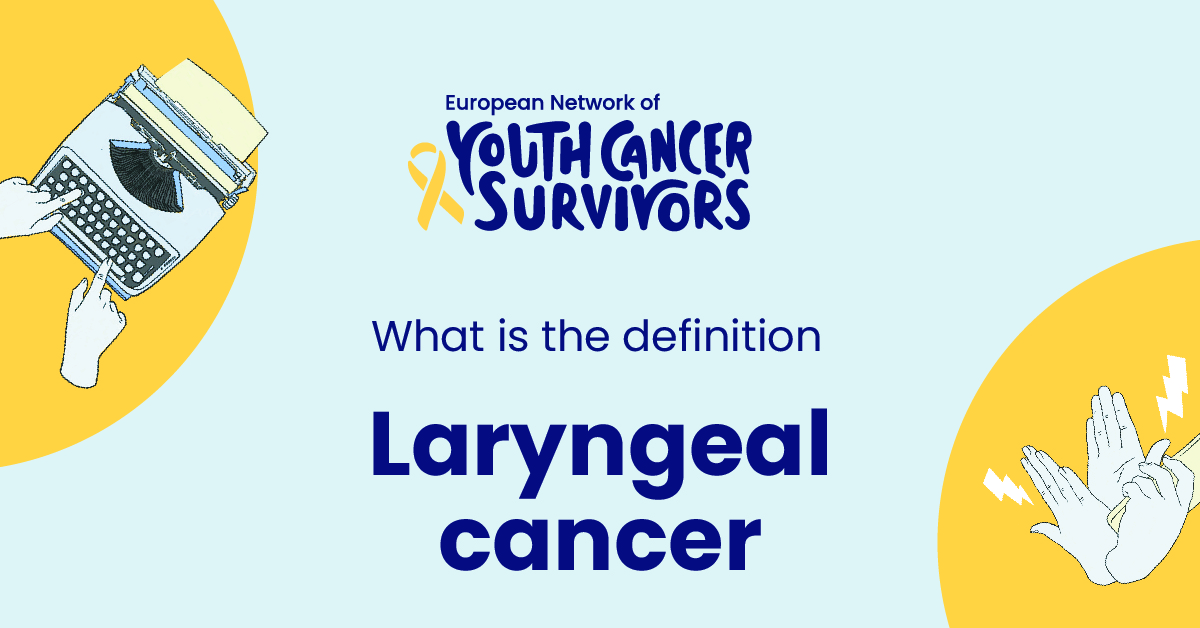
Cancer is a complex and often misunderstood condition that can impact various parts of the body. In the simplest terms, it can be defined as a group of diseases characterized by the abnormal growth of cells that multiply uncontrollably and can infiltrate and destroy normal body tissues.
The development of cancer happens when the body’s normal control mechanisms stop functioning. As old cells do not die off, a mass of tissues, called a tumor, develops. These detrimental growths can be malignant, leading to the spread of cancerous cells throughout the body via blood and lymph systems.
What is Laryngeal Cancer?
Laryngeal cancer is a type of throat cancer that primarily affects the larynx or the voice box. The larynx is a short passageway that forms a crucial part of your body’s respiratory system. It is located in the neck, just behind the Adam’s apple.
The role of the larynx in the body mainly consists of breathing, swallowing, and speaking. It is made up of cartilages – with the most prominent being the Adam’s apple, which protects the vocal cords and helps in sound production.
Types of Laryngeal Cancer
There are several types of laryngeal cancer depending on the affected area, but the main types include Squamous Cell Carcinoma, Adenocarcinoma, and Sarcoma.
Squamous cell carcinoma is the most prevalent form of laryngeal cancer. It affects the flat, thin cells lining the throat. Adenocarcinoma stems from glandular cells, while sarcoma arises from the soft tissues of the larynx, such as fat and muscle.
Causes and Risk Factors of Laryngeal Cancer
Like other types of cancer, laryngeal cancer cannot be traced back to a single cause. Several factors increase the risk of developing this cancer. Lifestyle factors, particularly heavy smoking and excessive alcohol use, are the leading causes.
Genetic factors might also play a role, with people who have a family history of head and neck cancers being more likely to develop the disease. Other potential risk factors include exposure to hazardous substances like asbestos, a diet lacking in fruits and vegetables, and previous radiation therapy to the neck or head.
Symptoms and Signs of Laryngeal Cancer
Laryngeal cancer can exhibit a plethora of signs and symptoms, with the severity depending on the stage of the disease. Early warning signs include a persistent cough, trouble swallowing, and a hoarse voice. Others might experience ear pain and breathing difficulties.
The symptoms of advanced laryngeal cancer include a sore throat that persists, noticeable weight loss, and the presence of a lump in the neck. If the patient displays any of these symptoms, immediate consultation with a healthcare professional becomes imperative.
Get to know us better
If you are reading this, you are in the right place – we do not care who you are and what you do, press the button and follow discussions live

Diagnosis and Staging of Laryngeal Cancer
Diagnosing laryngeal cancer typically involves physical examinations, a review of the patient’s medical history, imaging tests, and a biopsy. The staging process defines the extent or severity of cancer, guiding the treatment options and helping predict the patient’s prognosis.
Key diagnostic tools like endoscopy, CT scans, MRI, and PET scans help visualize the larynx and adjacent structures. A biopsy, typically a fine-needle aspiration, takes a sample of abnormal cells from the larynx for microscopic analysis to confirm a cancer diagnosis.
Treatment Options and Management of Laryngeal Cancer
Treatment of laryngeal cancer typically depends on the size, stage, and location of the tumor, along with the patient’s overall health. Options include surgery, radiation therapy, and chemotherapy.
Surgery aims to remove the cancerous cells, but how much of the larynx needs to be removed depends on the extent of the cancer. Radiation therapy uses high-energy x-rays to kill cancerous cells, often used before surgery to shrink a tumor, or afterward to eliminate any remaining cancer cells. Chemotherapy employs drugs to kill cancer cells and is typically combined with radiation therapy.
Prevention and Coping with Laryngeal Cancer
Effective prevention strategies include quitting smoking, moderating alcohol intake, maintaining a healthy diet rich in fruits and vegetables, and getting vaccinated against human papillomavirus (HPV), a sexually transmitted infection that can cause throat cancer.
Regular screening for head and neck cancers can lead to early detection and more effective treatment. For coping strategies, support groups, counseling, and activities that help reduce stress, such as yoga or meditation, can prove helpful.
Conclusion
Understanding laryngeal cancer involves knowing the definition, types, symptoms, diagnosis, treatment options, and coping strategies. It is essential for those at risk and the general public to be aware of this disease, as it can help in early detection and possibly reduce the risk of progression or recurrence.
Frequently Asked Questions about Laryngeal Cancer
- What is the survival rate for Laryngeal Cancer?
Survival rates for laryngeal cancer vary greatly depending on the stage of cancer at diagnosis. According to the American Cancer Society, the 5-year survival rate for localized laryngeal cancer is about 78%.
- Can Laryngeal Cancer be treated without surgery?
Yes, non-surgical treatments like radiation therapy and chemotherapy can be used to treat laryngeal cancer, often in early stage of the disease or to keep advanced cancer under control.
- What is the main cause of Laryngeal Cancer?
The main causes of laryngeal cancer are lifestyle factors. Prolonged tobacco use and excessive alcohol consumption significantly heighten the risk.
- Can Laryngeal Cancer reoccur after treatment?
Yes, like other cancers, laryngeal cancer can recur after treatment. Regular follow-up appointments with your care team can help catch any recurrence early.
- Is Laryngeal Cancer Different from Throat Cancer?
Yes, while laryngeal cancer affects the larynx (voice box), throat cancer is a general term that refers to cancers that develop in the throat (pharyngeal cancer) and voice box.

















Comments
Thank you. Comment sent for approval.
Something is wrong, try again later